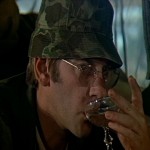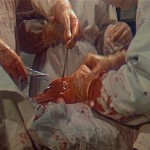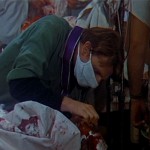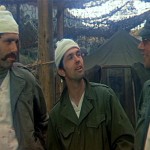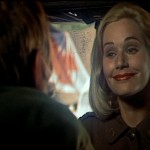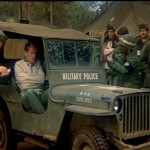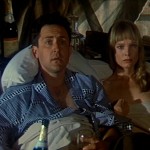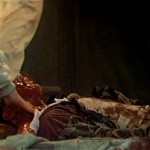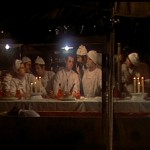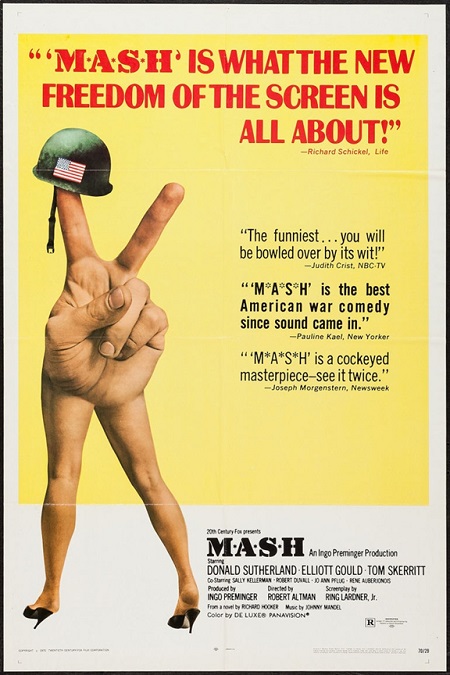
MASH – 1970
I’ll start off by saying that this was a pretty good movie, made even more remarkable because it was the first zany, screwball comedy to be nominated for Best Picture in many years. But the comedy was mostly pretty dark since it was set against the backdrop of the Korean War. It made a point of not shying away from some of the graphic and bloody images of life in a Mobil Army Surgical Hospital unit.
The film had a pretty large cast which was made up of mostly unknown names. Donald Sutherland played the arguable lead, Captain Hawkeye Pierce, M.D. I say arguable because there was no central plot with a specific protagonist or antagonist. There were good guy characters who were sometimes unusually cruel, and there were bad guy characters who were often commendable. But much of the film seem to be told from the perspective of Captain Pierce.
Operating alongside him are his two closest friends, Captain “Trapper” John McIntyre, played by Elliott Gould, and Captain “Duke” Forrest, played by Tom Skerritt. His commanding officer, Lieutenant Colonel Henry Blake, was played by Roger Bowen. The bad guys included Major Frank Burns, played by Robert Duvall, and Major Margaret “Hot Lips” Houlihan, the Chief Nurse, played by Sally Kellerman. Other notable names were Rene Auberjonois as the chaplain, Father Mulcahy, John Schuck as the dentist, Captain “Painless Polak” Waldowski, and Gary Burghoff as Corporal “Radar” O’Reilly. Incidentally, Burghoff was the only member of the cast who transitioned to the successful TV show that was inspired by the film.
I don’t want to compare the movie to the TV show, but I have to say that, like the TV show, it was very episodic. It seemed to be made up of seven, or so, individual stories, each of which could have easily been turned into a half-hour sit-com episode. There was the opening, in which we are introduced to most of the characters. There was the part where the sexy Chief Nurse arrives. There was the episode where the Painless Polak tries to commit suicide and is stopped by his friends. There was the one where Hawkeye and Trapper go too far playing pranks on Hot Lips and she threatens to resign her commission. And there were several others, but the final episode is where the war ends and they all go their separate ways.
The comedy was silly and often hilarious, and there were times when I found myself laughing out loud. Director Robert Altman did a fantastic job of portraying the chaos of such an active place. He did things that no other director had done like having actors saying their dialogue on top of each other, making it confusing but incredibly realistic. He was overtly sexual in his sense of humor, appealing to audiences who were obviously ready for a few raunchy laughs.
But all the laughs had to be taken with a grain of salt. The gushing blood and gore weren’t funny in the least. The fact that war was an ugly, messy business in which young men, American and Korean, died in pain and suffering, was not lost on me. The doctors, whose futile job it was to try to keep them alive, found that the only way for them to hold on to their sanity were the jokes.
The theme song was also pretty popular and got plenty of radio play. Called Suicide is Painless, it was written by Johnny Mandel with lyrics written by the director’s 14 year-old son, Mike Altman. Robert liked it so much that he used it as the theme for entire film’s score, though it was originally written for the suicide scene, which I thought was one of the best scenes in the film. It was funny, but touching, frightening, and depressing all at the same time. It was about a man who was supposed to be a Don Juan, but couldn’t get it up when he wanted to. His fragile mind thought that it must mean that he was now a “fairy,” even though he was really just emotionally damaged because of the horrible conditions of the war. It was a beautifully done scene, even though it irreverently lampooned the famous Leonardo da Vinci painting, The Last Supper.
